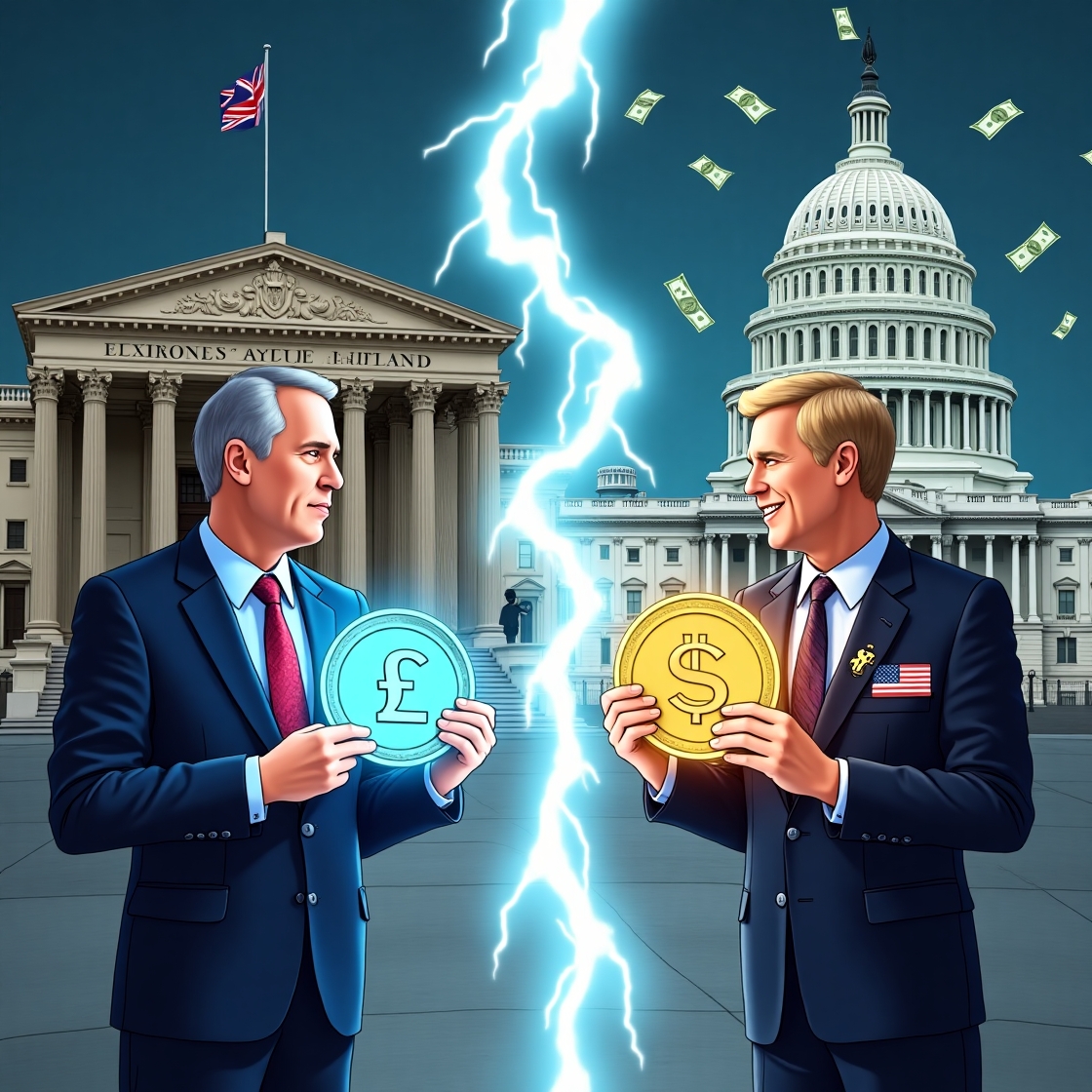In a world where financial innovation is rapidly reshaping the future of money, a growing rift is emerging between two major economies—The United Kingdom and the United States—over the role of stablecoins in modern banking. At the heart of this divergence is Andrew Bailey, Governor of the Bank of England, who has issued a stark warning about the potential dangers of allowing banks to issue stablecoins. His cautious stance puts the UK on a different trajectory from that of the United States, particularly under the Trump-era approach that embraces stablecoins as tools for strengthening the global reach of the U.S. dollar.
Stablecoins in the Crosshairs
Stablecoins, digital assets pegged to fiat currencies, have gained traction as a more efficient, blockchain-based alternative to traditional money. Yet, as their use proliferates, so do concerns over their long-term implications for financial stability and monetary sovereignty.
In a recent interview with The Times, Governor Bailey stated that he favors tokenized bank deposits over privately issued stablecoins. Tokenized deposits refer to fiat money that is represented digitally on a blockchain, but is still backed and held within traditional banking institutions.
“I’d much rather pursue the path of tokenized deposits,” Bailey noted. “The real question is: How do we digitize money, especially in payments, without undermining the financial system?”
He emphasized that while stablecoins present an appealing vision of innovation, they raise profound challenges for both monetary policy and financial stability. According to Bailey, for any form of digital money to be trusted, it must retain the key attributes of money, particularly its nominal value stability.
A Threat to the Banking Ecosystem?
Bailey’s central argument is rooted in the belief that allowing banks to issue stablecoins could drain liquidity from the traditional banking system. This shift could undermine the credit creation function of banks—a cornerstone of modern economies. By moving deposits away from regulated financial institutions and into stablecoins, the entire mechanism by which banks lend money and support economic growth could be destabilized.
Such concerns echo those of European Central Bank (ECB) President Christine Lagarde, who has previously warned that widespread adoption of stablecoins could lead to the privatization of money, stripping it of its role as a public good.
“Stablecoins pose both a financial stability issue and a monetary issue,” Bailey remarked. “They must function as money and retain their value—but they also divert liquidity from traditional banks.”
Diverging Philosophies: UK vs. US
This cautious view sets the Bank of England on a collision course with U.S. policy, where regulators have taken a more permissive stance. In a bold move earlier this year, the U.S. government—under a Trump-era executive order—promoted stablecoins as a strategic asset to project and protect the sovereignty of the U.S. dollar on the global stage.
This difference in philosophy is stark:
-
The U.S. is moving towards embracing stablecoins as dollar-denominated instruments that can thrive in global digital finance.
-
The ECB is leaning into central bank digital currencies (CBDCs) to maintain control over public money in a digitized world.
-
The UK is advocating for tokenized bank deposits, combining blockchain innovation with the safety and regulation of traditional banking.
Bailey summarized the divergence aptly:
“The U.S. is moving toward stablecoins. The ECB is moving toward central bank digital currencies. Neither is moving toward tokenized bank deposits.”
The Road Ahead
The ongoing debate underscores a larger question: Who should control the future of money? Should it be private institutions, regulated banks, or central banks? As stablecoins become more embedded in daily transactions and cross-border settlements, the choices made by key institutions like the Bank of England and the U.S. government will shape the monetary landscape for decades.
Bailey’s comments suggest a cautious yet thoughtful approach—one that embraces digital transformation but insists on preserving the integrity and stability of the financial system.
As the UK, EU, and U.S. forge their respective paths, the global financial system may witness a fragmentation of digital money models—each with its own risks, rewards, and geopolitical implications.
Ready to start your cryptocurrency journey?
If you’re interested in exploring the world of crypto trading, here are some trusted platforms where you can create an account:
- Binance – The world’s largest cryptocurrency exchange by volume.
- Bybit – A top choice for derivatives trading with an intuitive interface.
- OKX – A comprehensive platform featuring spot, futures, DeFi, and a powerful Web3 wallet.
- KuCoin – Known for its vast selection of altcoins and user-friendly mobile app.
These platforms offer innovative features and a secure environment for trading and learning about cryptocurrencies. Join today and start exploring the opportunities in this exciting space!

Join our crypto community for news, discussions, and market updates: CryptoBCC on Telegram.

Disclaimer: Always do your own research (DYOR) and ensure you understand the risks before making any financial decisions.
#StablecoinDebate #BankofEngland #AndrewBailey #DigitalCurrency #TokenizedDeposits #USDollarStrategy #CBDC #FinancialStability #MonetaryPolicy




